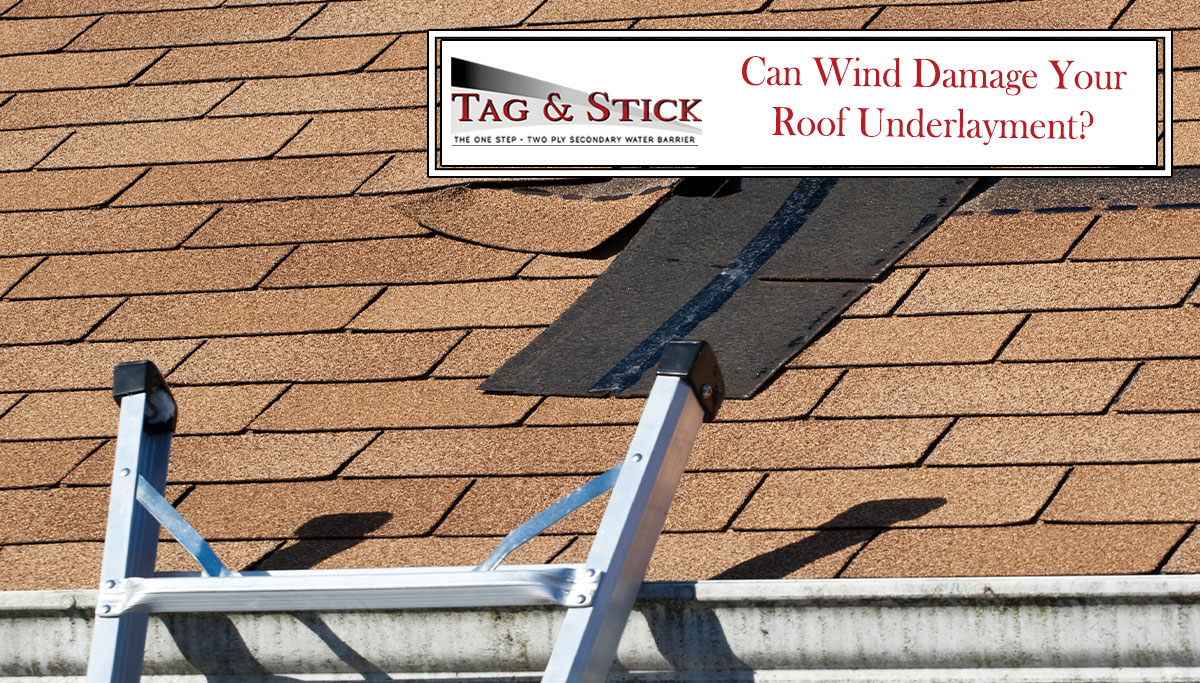Can Wind Damage Your Roof Underlayment?
If you’ve landed on this page, then you probably already know the short answer. Yes, wind can damage your roof underlayment. There is a lot of science behind the various forces that are at play on your roof. From expansion and contraction to the effects of humidity; Your roof is the first line of defense for your home. To find out what you can do to prevent the wind from damaging your home, read on.
The Science Is Not That Obvious
Just like Queen and David Bowie, all roofs are under pressure! Builders young and old will remember the story of the 3 little pigs. All that the wolf had to do was huff and puff and “blow the house in”. This direct force, similar to a fan blowing papers off your desk is known as positive pressure. The second type of force is uplift or negative pressure.
Positive Pressure
Positive pressure is the force that wind creates as it blows onto something. This occurs where a wall is perpendicular to the wind direction or where the wind blows up the slope of an angled roof. You can think in terms of positive pressure pushing the surface that it acts on.
Uplift / Negative Pressure
You may have seen some videos or explanations on how wings work on a plane. The same science is at work here. On an airplane, uplift is wanted, on a roof, not so much. As the wind blows onto the upward slope of the roof, it reaches the roof apex and blows over the downward slope of the roof. This sudden change of angle cause turbulence in the air directly above the roof surface resulting in negative pressure. These forces are also known as suction forces.
What Type of Underlayment Are You Using?
Let’s take a brief look at some of the other options for roof underlayment.
Asphalt Saturated Felt
This type of roof underlayment consists of felt paper made from fiberglass or a cellulose-based material. The cellulose-based paper is often referred to as “organic”. The paper is fixed onto the roof decking mechanically and the asphalt is then applied over it with a “hot-mop”. Roofers need to bring a specialized torch to heat the asphalt to a point where it is mopped onto the decking. This poses a real fire risk to the roof as well as a safety concern for workers who stand a chance of sustaining burns. The slippery surface underfoot is also a serious falling hazard.
Synthetic Underlayment
Synthetic roof underlaymentoptions are safer underfoot than the asphalt-saturated felt. With a rough texture, workers can get a better grip on the roof surface. Synthetic materials have some good physical properties such as being waterproof. However, you do need to be aware of the following drawbacks:
- Many synthetic solutions are not code approved
- The synthetic solutions are not self-sealing and can leak where fastened mechanically to the roof
- Some installation instructions are complicated. This may lead to leaks over time if the underlayment is not properly installed
Tag & Stick’s One Step – 2 Ply Modified Application
Let’s take a step back and consider that you need the roof underlayment for your home. In South Florida, the wind here can reach hurricane force, literally. You need a solution that can withstand the wind forces that our temperamental climate can provide. Tag & Stick’s solution is a self-adhering 2 ply water barrier for your home. The underlayment is self-sealing and so the necessary mechanical attachments will not create a place for water to seep in. Some of the benefits include:
- A safe non-slip surface for roofers
- 115 mils thick and double-layered for a superior moisture barrier
- Removable in the future in case of roof surface damage
- No fire hazards since torches are not required
- Exceeds the 30/90 hot-mop building code uplift standards
Make The Right Call
With industry-leading technology, Tag & Stick’s One Step – 2 ply modified application is the best there is. There’s a reason why roofers in South Florida know our name. Why not give us a call at (954) 255-3107, we’ll take great care of you.
